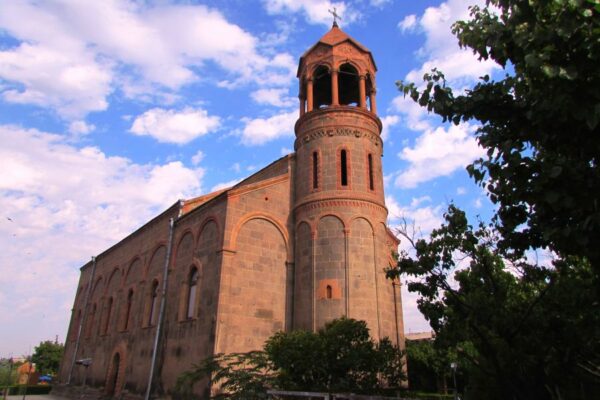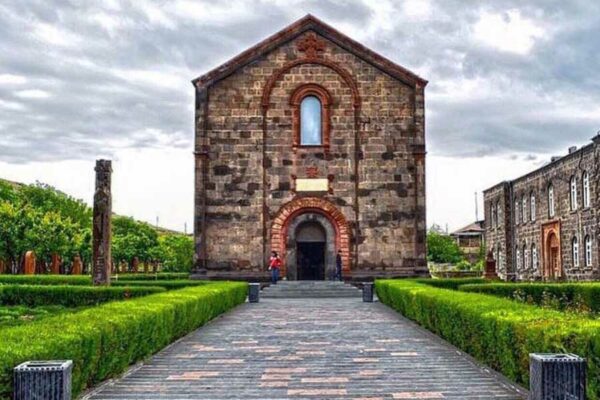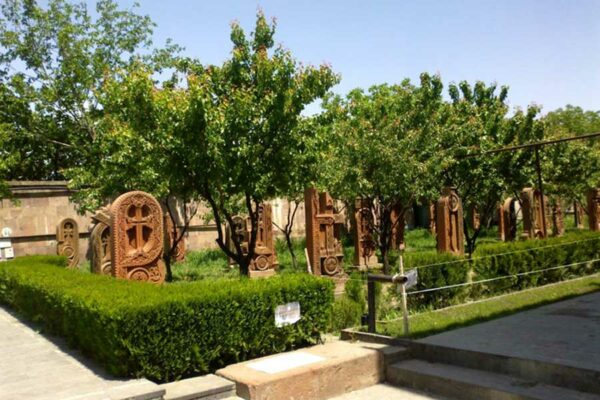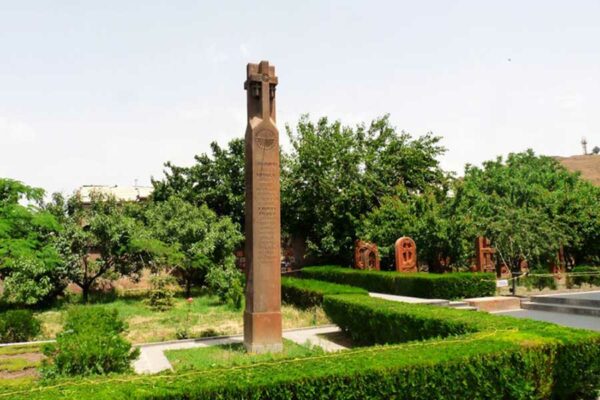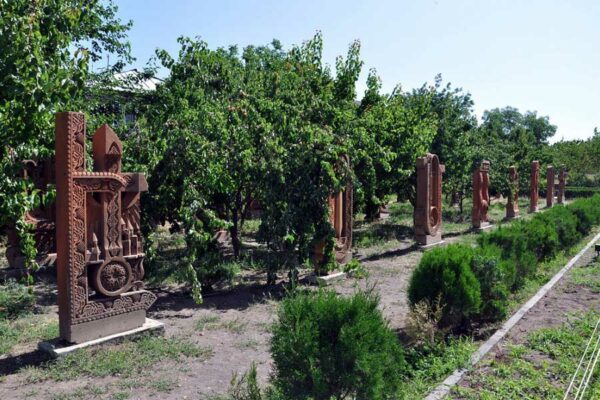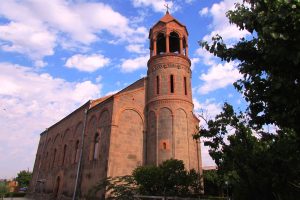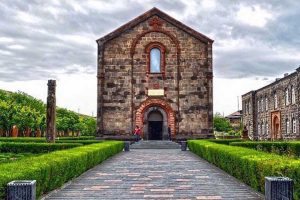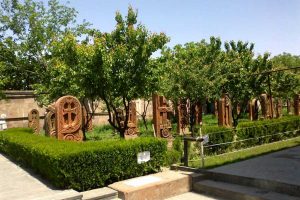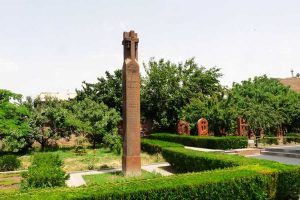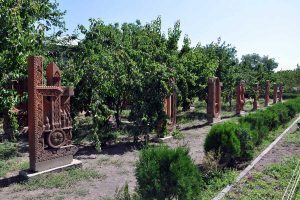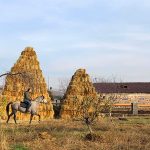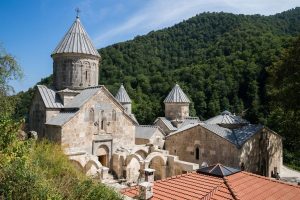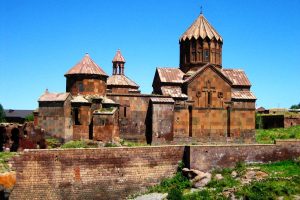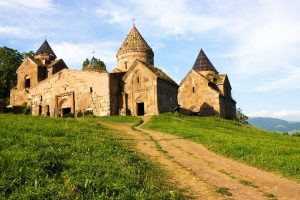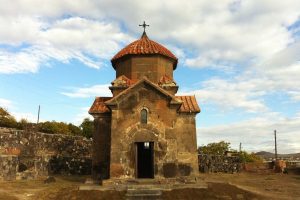Oshakan is a village in the Aragatsotn Province of Armenia located 8 kilometers southwest from Ashtarak. It is well known to historians and pilgrims of the Armenian Apostolic Church.
During the Arsacid Dynasty of the Kingdom of Armenia, it served as the main city of the province of Ayrarat and the capital of its Aragatsotn district from which the Amatuni noble family ruled. However, it is perhaps best known for the Church of Saint Mesrop Mashtotswhich also happens to be the burial place of Saint Mesrop Mashtots, the creator of the Armenian alphabet. The church houses his grave and was rebuilt by Catholicos George IV in 1875. Wall paintings on the interior were done in 1960 by the artist H. Minasian.
Just to the south of the town is Didikond Hill, where excavations have uncovered a fort and five palaces built around the 7th-5th centuries BC.
To the north of town located in the Mankanots Valley is Saint Sion Church dating from the 7th century AD. It is believed to mark the grave of Byzantine Emperor Mauricius or his mother, as one historian claims he came from Oshakan. Adjacent to the church is a pillar on a plinth dated to the 6th-7th c.
West of Oshakan is a bridge dated to 1706 that crosses over the Kasagh River.
On a hilltop overlooking the town there is a Tukh Manuk Shrine with a large khachkar monument adjacent that sits within a large cemetery. The portion of the cemetery higher upon the hill is the older section while the lower portion contains a recent cemetery. There are Iron Age tomb fields around the area. Higher upon the same hill may be seen the shrine of Saint Grigor. Nearby are also the shrines of S. Sargis, S. Tadevos the Apostle, and a rock-cut Astvatsatsin.

